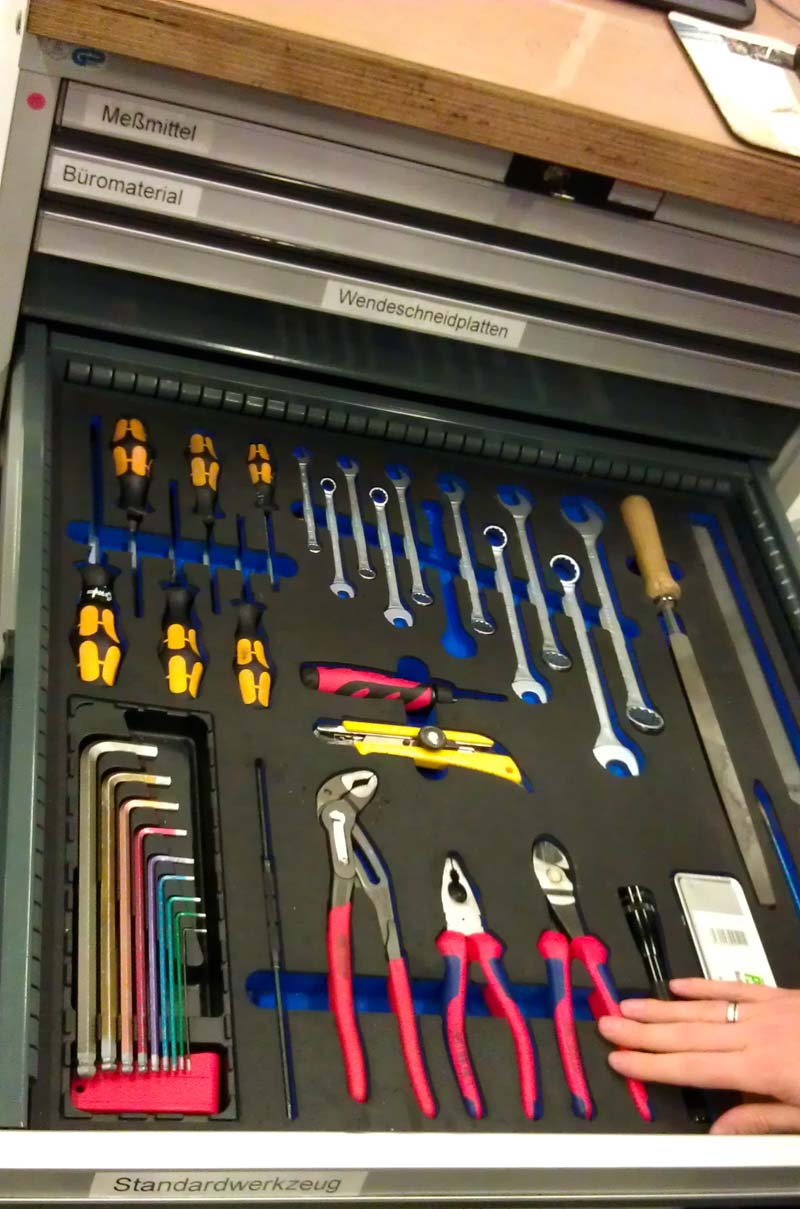The 5S method originates from Japanese production and was first used by the car manufacturer Toyota. The Japanese Taiichi Ono, who also invented the Kaizen management concept, wanted to simultaneously introduce a systematic workplace organization for a special production system. The aim is to reduce any waste in the workplace and thus to achieve a continuous improvement process.
According to the German offshoot of the Kaizen Institute, the aim of the 5S method is “to design workplaces in such a way that work can be carried out without disturbance”. Therefore, searching in general, long travel distances and unnecessary waiting times should be avoided. The Japanese Taiichi Ono was then of the opinion that these disruptive factors should be avoided so that work could be done without waste. In his opinion, a clean and tidy working environment is the basis for work of high quality. This approach is derived from Lean Management.
The abbreviation 5S stands for these Japanese terms:
Seirii – the sorting
Seiton – the arranging
Seiso – the cleanliness
Seiketsu – the standardization
Shitsuke – the self-discipline

If the 5S method is applied across the entire company or at least to individual departments, disorder, unstructured work processes and inefficiency are to be uncovered jointly and more quickly. The result: Employees will spend less time on activities that do not create added value or revenue for the company. In some expert articles, it can also be read that the method, if implemented correctly, also leads to employees being motivated to maintain the stricter workplace organization.
Note: The employee must not only be shown the duties at the workplace; rather, it is the technical improvements in work that the employee or the entire team enjoys or will enjoy from now on. The 5S method is also part of the Kaizen philosophy. It stands for continuous improvement, which is characterized above all by a low expenditure of time, great effect, and low costs.
Implementation based on the five S-concepts

Sorting in the sense of sorting out. The employee should get rid of all the unnecessary things that are not needed to carry out daily work. The result will be that more space will be created for work equipment and materials.
Arrangement in the sense of systematization. The systematic arrangement of tools, operating resources and required materials leads to smooth work processes directly at the workplace. As a measure of importance, the frequency of use of the tools can be taken into account. Also conceivable: The labeling of work equipment. The clear assignment of work equipment and storage location supports the employee immensely.
Cleanliness in the sense of order in the workplace. The employee must clean his workplace regularly or hand it over cleaned to his colleague. If the employee regularly cleans his workplace, he simultaneously carries out an inspection or a material inventory.
Standardization in the sense of safety at work. Standards lead to employees complying with certain rules. These are necessary above all in terms of security. In intralogistics, therefore, special floor markings are prescribed for path boundaries and pick-up areas. This also includes route restrictions for driverless means of transport. At the workplace itself, for example in the packing department, it is necessary to standardize the packing materials and the packing process.
Important: The preparation of 5S checklists is helpful at the most when deviations from the standard are unavoidable.
Self-discipline in the sense of “stick to the rules”. If the employees adhere to the established rules, nothing stands in the way of the desired order and cleanliness at the workplace. Regular checks using the checklists mentioned above help the employee to maintain a certain standard. Deviations must be remedied promptly.
As mentioned above, the 5S method was initially applied in production plants. In the meantime, it has also increasingly found its way into service and software companies.
Are you interested in management concepts based on Kaizen? Then the following articles might be interesting for you: Lean Method Heijunka and Lean Production.
Teaser image: Author/ CC BY-ND 2.0
Also available in Deutsch (German)